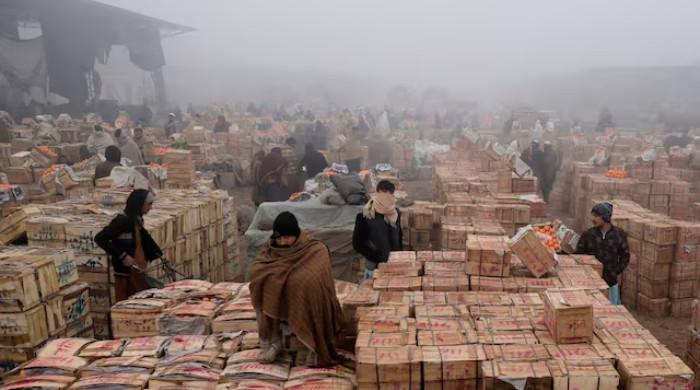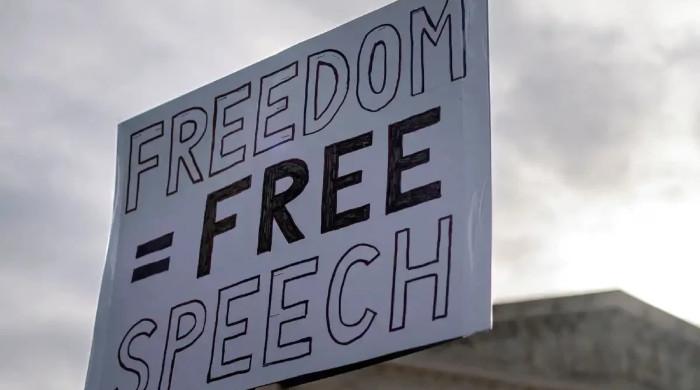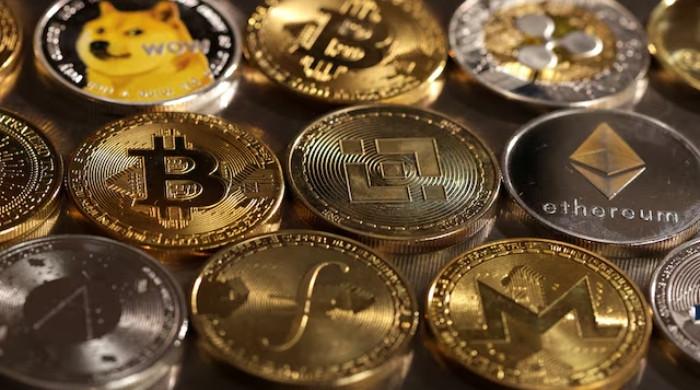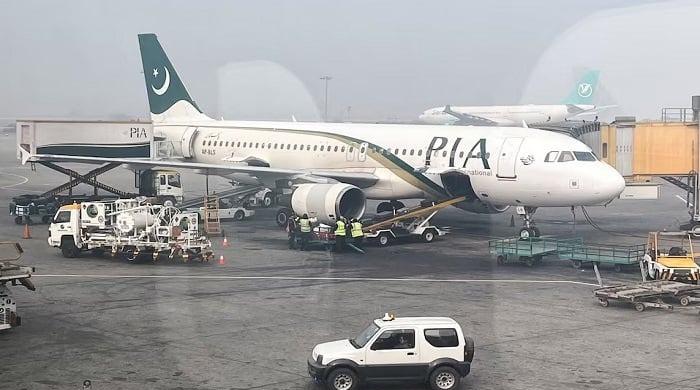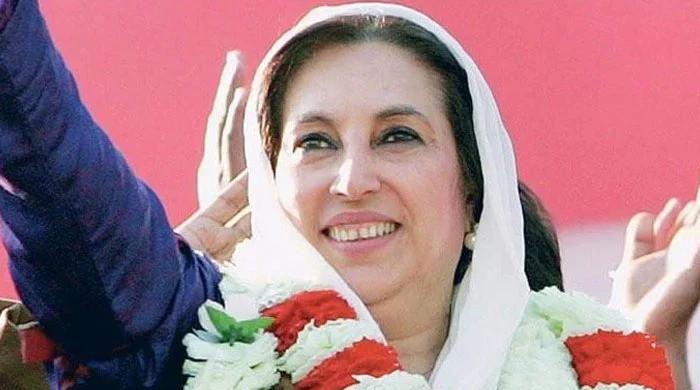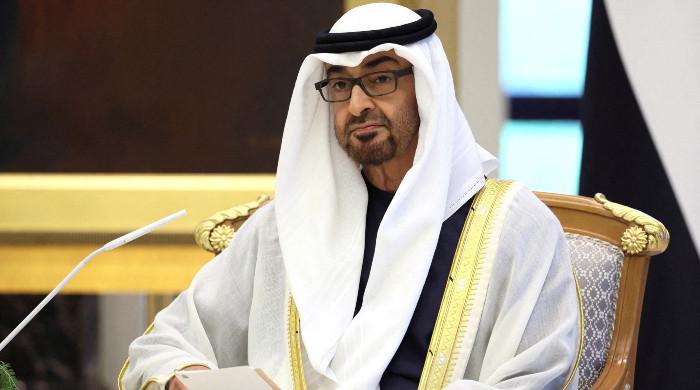Politics of 'body counts'
Let non-political individuals take a back seat — whether it’s Bushra Bibi or Mohsin Naqvi
November 29, 2024
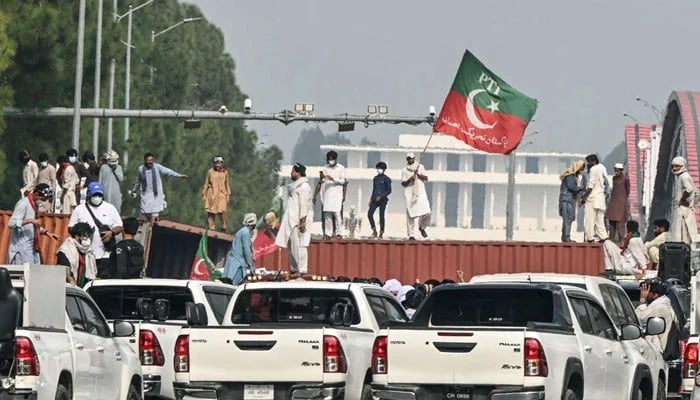
Even if no casualties had come to pass among Pakistan Tehreek-e-Insaf (PTI) protesters, the events of November 26 represent a stupendous intelligence debacle. The question remains: how did Bushra Bibi and Khyber Pakhtunkhwa (KP) Chief Minister Ali Amin Gandapur — who led thousands of PTI protesters — manage to reach Islamabad’s D-Chowk and then escape, leaving party workers at the mercy of law enforcers?
This marked the second instance in recent months where Gandapur abandoned his party workers, who had risked their lives to show solidarity with the party's founder. And as always, conflicting figures about the exact number of casualties, including both the injured and the dead, remain “talking points” and fuel blame games.
While the official figure claims that at least four Rangers personnel were killed and over 150 policemen and Rangers were injured, the death toll claim from the PTI is too contradictory, ranging from 8 to 278. This in itself shows a complete lack of coordination among their leaders, but one thing so far is certain: none of the main PTI leaders who initially were seen in the protest were arrested. So, the big question PTI local leaders and supporters are asking is, where were they? There is nothing wrong if a judicial commission is constituted to probe what exactly happened on November 26, but there is a lot to be learned for both sides from this fiasco.
Perhaps, not many people know the significance of this month, i.e., November, in the country's charred political history. It was in this very month, 56 years ago, on November 7, 1968, that the death of a student, Abdul Hameed, of Gordon College Polytechnic, Rawalpindi, sparked a movement against the military dictator and then-president Ayub Khan, ultimately resulting in his resignation and the fall of his government.
‘Body count,’ often referred to in our politics as ‘Lashoon key Siyasat,’ remains part and parcel of every protest movement. Official counts were always contested, while the official claims were also exaggerated. Media always becomes the first “casualty,” whether it’s war, civil war, or civil unrest. Journalists and media come under fire both from the government and the opposition. This is evident from the arrest of renowned journalist Matiullah Jan in a “drug” and “terrorism” case, as well as the attacks on media houses by the protesters.
There is no doubt that the claims of some journalists, including those YouTubers and ‘digital media warriors,’ also lack evidence as far as the “death toll” is concerned, which is, of course, a matter of concern for ethical journalism. But at a time when the government imposed a complete ban on the internet and mobile services, and the media itself adopted a policy of "self-censorship," chances of disinformation, misinformation, and fake news always dominate.
Even after 50 years, the facts about the casualties in the former East Pakistan (now Bangladesh) during the 1971 civil war followed by a full-scale war are still unknown. The same holds for the opposition’s PNA (Pakistan National Alliance) movement against former Prime Minister Zulfiqar Ali Bhutto in 1977 and the 1983 MRD (Movement for the Restoration of Democracy) movement against General Zia-ul-Haq. During the 1992 and 1995 operations in Karachi, the then MQM (Muttahida Qaumi Movement) claimed that 15,000 of its workers were killed in extrajudicial actions, while official figures put the count at around 400.
Additionally, they alleged that over 450 policemen, including officers, were killed by MQM militants, though the circumstances of these killings remain unclear. Similarly, the issue of ‘missing persons,’ whether in Balochistan, KP, or Karachi, raised many questions. The figures could be exaggerated, but the fact remains that the disappearance of political rights activists, including journalists, is based on facts and evidence.
However, those responsible were never held accountable. Unfortunately, the judicial commission set up for missing persons about a decade back, headed by retired Justice Javed Iqbal, itself went “missing,” raising serious questions about uncounted cases of missing persons.
However, custodial deaths during or after agitation often spur protest movements, which, in at least two instances, led to the downfall of governments. Both movements culminated in the imposition of ‘Martial Law’ by General Yahya Khan in 1968 and General Zia-ul-Haq in 1977. Ayub Khan, instead of transferring power to the speaker as per the 1962 constitution, handed it over to General Yahya. Similarly, Zia, driven by his political ambitions, completely breached the agreement reached between Bhutto and the PNA.
The third movement, which resulted in the killing of hundreds of protesters, was the MRD launched against General Zia and for the reinstatement of democracy in the country. It was by far the most organised political movement against the mighty powerful military dictator, but it made Zia much weaker. Only a year later, he held a “referendum” in a bid for political legitimacy, followed by general elections in 1985 and the formation of a civilian government, though under the ‘umbrella’ of president General Zia-ul-Haq. But it was Zia’s handpicked prime minister Mohammad Khan Junejo who, in his very first speech in the parliament, surprised his own mentor when he declared, ‘Martial Law and Democracy can’t go together’ and lifted the ban on political freedom, paving the way for the return of Benazir Bhutto.
Political parties need to learn lessons from the MRD, and many believe that had former prime minister Benazir Bhutto Shaheed participated in the 1988 elections from the MRD platform and converted it into an electoral alliance against the establishment-backed coalition of the IJI (Islami Jamhoori Ittehad), Pakistan’s political discourse would be different today.
Where will I go from here is a million-dollar question? The government, led by Prime Minister Shahbaz Sharif of PML-N, is considering the imposition of Governor’s rule or a ban on PTI. This could be yet another historic mistake, as bans often exacerbate the chaos — whether it was the ban on the Communist Party of Pakistan and Jamaat-e-Islami (JI) in the 50s and 60s, the ban on the National Awami Party (NAP) in the 70s, or the undeclared ban on the PPP and later MQM (London). Even the ban on the now-called ‘outlawed organisations’ failed to produce the desired results and often turned out to be counterproductive.
The only way forward is a political solution. Some political mediators need to play their role in bringing all the major political parties, particularly the three mainstream ones, across the table to resolve political issues. Pakistan’s political history provides ample proof and evidence that the use of brute force never led to solutions, only chaos. Meanwhile, the country’s biggest political party, PTI, needs to revisit its politics since 2022 and its continued failure in the four long marches. PTI has been in power in KP since 2013 and also has roots in all four provinces. What it requires is the strategy and organisational capacity needed for a political movement.
What happened to the ‘final call’ is now history. Ups and downs are part of politics and political movements, but the next move demands serious thought. Let non-political individuals take a back seat — whether it’s Bushra Bibi or Mohsin Naqvi.
The writer is an analyst and columnist for GEO, The News, and Jang.
X: @MazharAbbasGEO
Disclaimer: The viewpoints expressed in this piece are the writer's own and don't necessarily reflect Geo.tv's editorial policy.




